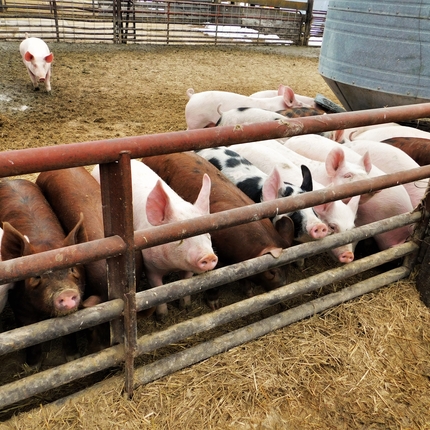In our second highest viewed post of 2020, we feature details on a new program for producers that opened up as part of COVID-19 relief. A second round opened up later in the summer, and a third round is included in the relief bill agreed upon earlier this month. We will post more details on CFAP 3 on our website as they come available.
This piece is authored by Anna Johnson, and was posted in June. While the deadline for CFAP 1 has come and gone, this blog was important for 2020 as this is the information we strive to provide to you. This year, news was coming fast and program eligibility, at times, was confusing. We did our best to stay on top of what was happening and keep you up-to-date. We will continue to do so. Feel free to reach out to us at any time with questions.
The U.S. Department of Agriculture (USDA) has opened up applications for the Coronavirus Food Assistance Program (CFAP), which offers producers of many commodities payments if they experienced a price decrease between set dates in January and April, or were unable to market their crops or livestock. For farmers and ranchers who haven’t yet looked into whether the program will be helpful to their operation, here are a few things to know.
Is what I raise eligible?
Many grain crops, including corn, soybeans, oats and sunflowers are eligible for payments. Farmers will be paid for these commodities based on their inventory on Jan. 15, 2020. If a marketing contract was in place at that time, the type of contract also determines eligibility. With some marketing contracts, such as a basis contract or a deferred price contract, a farmer will be eligible for a CFAP payment, while with cash or forward price contracts a farmer will be ineligible.
Several types of livestock are also eligible for CFAP—cattle, hogs and sheep—as is dairy production. Poultry is currently not eligible, as is alfalfa. Payments for livestock are based on the number and type of head, both those sold between Jan. 15 and April 15 and inventory between April 16 and May 14.
Producers raising eligible crops or livestock usually sold at a high price premium, such as organic grains or specialty meats, will not be able to apply for a higher payment. The payment level is fixed by commodity, no matter what price you normally sell at.
You can look up more about which crops and livestock are eligible here.
Will USDA expand which crops and livestock can be eligible for payments?
The USDA is open to expanding which crops and livestock are eligible for payments. They’re asking for input on that topic at this link on regulations.gov. Input is due by June 22. You can also read comments that have already been submitted here.
If you’d like to give the USDA feedback on what crops or livestock they should add to CFAP, get in touch with us. They will be more likely to accept your suggestion if you can share detailed price data about the commodity, and if several farmers and ranchers offer similar feedback and data.
How much will my payment be?
The USDA has released a Microsoft Excel calculator tool to help you estimate how much your payment would be. The calculator is available for download from this website.
If you qualify for a payment, the USDA has said they will pay 80 percent of your payment up front, with the final portion of your payment likely to come later in the summer.
How do I apply?
Set up an appointment with your local Farm Service Agency office. You can look up your local FSA office here. You will need to meet with them over the phone as offices are closed for in-person visits.
You will need to provide documentation of what you produced. The USDA is accepting a wide variety of documentation. You are required to keep that documentation on file for three years, and the USDA may follow-up at a later date to require that you share that documentation with them.
You will also need to fill out some standard FSA forms if you have not filled them out with FSA for other programs. A full list of these can be found here.
Where else can I go for help?
USDA has a toll-free line that you can call to ask questions about the program, which is staffed five days a week. That number is: 877.508.8364.
In addition, the Farmers Legal Action Group released a guide on May 29 with very detailed information about CFAP that many producers may find helpful. As of this writing, the link to the guide is at the bottom of the linked page under the post from May 29.





